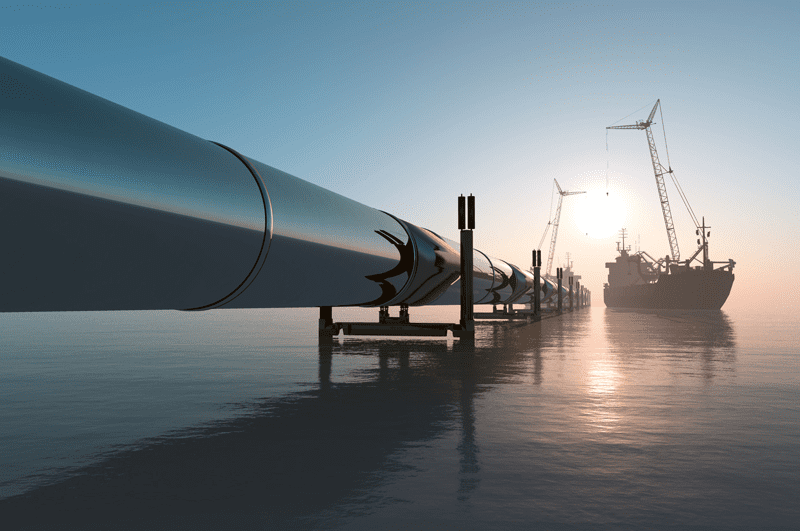In recent years, the role of technology has become more significant in midstream and downstream operations. With the increased use of technology in the oil and gas industry, oil producers and service providers have been able to improve the efficiency of their operations and maximize profits. Now with data and automation on the rise, the midstream market is bound to undergo a major transformation.
A large number of oil and gas processing facilities are demanding more data collection and automation programming be put in place as a way to maximize output, reduce plant downtime, and increase their ROI. By increasing the use of data and analytics in midstream operations, oil and gas companies have the ability to observe and determine the efficiency of their pipelines, solve problems and improve processes, and plan more strategically to improve their business.
As a result, many oil and gas operators and oil and gas solution companies are partnering with or acquiring pipeline data and analytics companies to enhance operations or better their services. Rapidly growing provider of energy data analytics and advisory services, LawIQ, is one of the companies that has taken the initiative to acquire leading liquids pipeline rate and tariff data company, Lens On Washington. As expressed by Craig Heilman, LawIQ’s Chief Operating Officer, the purpose of the acquisition is to expand their widely used natural gas and liquefied natural gas analytics platform, and extend their customer base into the oil pipeline and exploration and production market.
With the oil and gas industry experiencing an increased demand to improve and ramp up production, operators need feasible ways of obtaining and utilizing data to respond to such demand. Thus the assistance of oil and gas data and solution companies is crucial. Aware of the competitiveness within the oil and gas transportation market, LawIQ acquired the LawIQ Liquids Database (formerly Lens On Washington) to extend and build on their data and analytics covering oil and other liquids products’ pipelines and improve access to valuable insights buried in tariffs and other filings. “Our customers need to know the details of origin and destination points and rates, so that they can position themselves effectively and profitably,” stated Heilman. Their database, which has over 30 years of data, was meticulously aggregated and structured into an indispensable resource for customers.
In addition, the ability to monitor pipelines in midstream operations has become a crucial need for oil and gas operators. By monitoring pipelines, operators can determine the effectiveness of their pipelines (i.e., which segments of the pipeline are useful, pipeline errors), predict outcomes and prevent future risks, and plan better business practices. In addition to combining data, technology, and expertise for customers to better anticipate events impacting their growth, LawIQ is one of the companies aiding operators in acquiring pipeline and infrastructure data to improve business operations, with their acquisition of Lens on Washington. “Our analytics platforms, research content, and advisory services help customers model and assess their risks and opportunities and serve as a foundation for teams across their enterprises to better understand regulatory, and market dynamics from origination to ongoing operations,” Heilman expressed.
Although operational efficiency is a key reason for the increased need for data, another significant factor for operators seeking the use of data and analytics is revenue. LawIQ focuses on how data and technology can be used on the commercial side of the business for companies that own or develop energy infrastructure. “In our case, we leverage technology to help customers predicting regulatory timelines and costs that drive ROI and optimal infrastructure capacity” stated Heilman. With the use of data and analytics, operators would also have the ability to predict project and production costs and therefore, gain the advantage of thoughtfully planning out budgets and creating methods to reduce such costs.
Though many operators expect to maximize ROI with the utilization of data and analytics to enhance production, there are still issues that need to be addressed concerning production and pipeline capacity. As Heilman explained, “Growth in production will never match takeaway. There is always a period of falling prices followed by an increase when pipeline capacity comes online, then another drop with additional capacity. Supply and demand imbalances and periods of price volatility and instability are persistent across basins.” With a lack of infrastructure to get more of the production to market, basins will be left congested and supply and demand could be impacted, along with revenue and cost of operations.
Nevertheless, the oil and gas industry can still expect to see a rise in data and analytics with many operators investing in the solutions of data companies to improve pipeline operations and segmentation and discover potential business opportunities. “Teams use our platforms to baseline assumptions and data sets, benchmark projects, and identify commercial opportunities,” Heilman shared. In addition, the oil and gas solution and software sub-industry has also become a competitive market, with an increased number of solutions companies seeking to improve the business practices and strategies of oil and gas facilities and the operations of the oil and gas industry overall through data and software. “We will always be looking for ways to grow our offering of analytics platforms, research content, and advisory services,” stated Heilman.
Data and analytics and pipeline technology overall has been in popular demand for the oil and gas industry in recent years. With many oil and gas operators in North America looking to monitor the efficiency of their pipelines, improve midstream operations, and expand their profit and company growth, oil and gas data and solution providers are being invested in to help achieve such goals. Ultimately, as the industry undergoes a significant technological transformation on the domestic front, such transformation is expected to happen on a global level. Heilman expressed that LawIQ would welcome the opportunity to work with global companies. “As we continue to grow our exports, we expect to assist companies outside of North America that have opportunities and exposure to North American infrastructure capacity and performance,” stated Heilman.
Tonae’ Hamilton has been a contributor and associate editor to the magazine for two years. She has been writing professionally for almost four years. In her free time, Tonae’ likes to spend time with her three pets, cook, and binge-watch Netflix shows. Tonae' has a Bachelor of Arts in Communication from McDaniel College.










